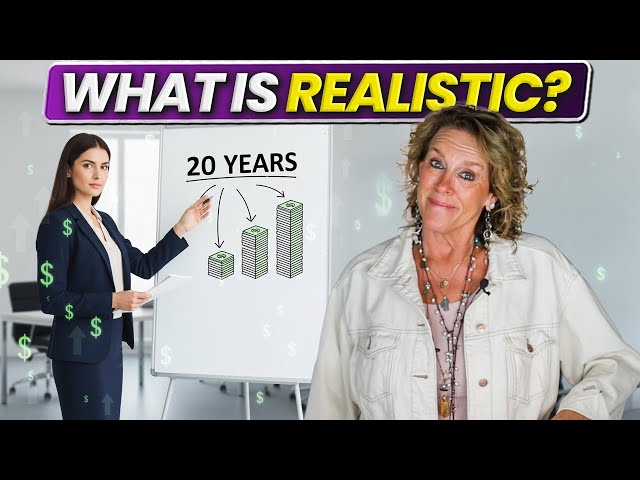When most people hear the word retirement, they imagine a future where work stops and life slows down. However, retirement doesn’t have to mean slowing down; it can mean creating freedom, options, and a lasting legacy. This article explores what it means to create a 20-Year Freedom Plan, a clear strategy for designing your post-work life with intention, security, and purpose.
The Shift: From “Retirement” to “Freedom Planning”
Traditional financial planning often assumes a simple pattern: you work, you save, you retire, and you live off your nest egg. But this model is outdated. Life expectancy is increasing, inflation erodes savings faster than expected, and health costs continue to rise.
Rather than focusing on how to stop working, the modern professional should focus on transitioning from active work to a purposeful life. This might mean:
- Selling or partially exiting your company
- Moving into a leadership or advisory role
- Creating systems or teams that allow for more passive income
This approach positions you not to slow down but to gain control of how you spend your time.
Step 1: Define Your 20-Year Freedom Number
To build this next chapter intentionally, you need a plan grounded in math, not guesswork. Here’s a practical formula for calculating your “20-Year Freedom Number”:
- Estimate your monthly cost of living.
- Include essentials such as housing, food, transportation, as well as lifestyle costs like travel or hobbies.
- Multiply by 12 to get your annual cost.
- Multiply by 20 to project for two decades.
- Add inflation, typically 3–5% per year, to reflect rising costs.
- Buffer for healthcare and unexpected events.
- Unplanned medical incidents remain the leading cause of wealth erosion, far surpassing divorce or poor investment decisions.
This calculation serves as a directional starting point to understand the actual cost of your future lifestyle, allowing you to reverse-engineer how to fund it.
Step 2: Build Multiple Income Streams
Depending solely on savings or a 401(k) is a risky strategy. Inflation, market fluctuations, and tax changes can all diminish returns. Diversification and active cash generation are key.
Consider these income categories:
Active Income: Your business or professional role, ideally one that can scale or run without you.
Investment Portfolios: Stocks, SmartFolios, dividend-producing assets, and index funds.
Real Estate: Rental properties, short-term rentals, or storage facilities that produce consistent income.
Alternative Assets: Bitcoin, blockchain-based investments, private equity, or royalties from intellectual property.
Passive Ventures: Limited partnerships in energy, aviation, or land monetization.
Each source should serve a distinct function, with some generating cash flow and others generating long-term appreciation.
Step 3: Harness the Power of Compounding
Albert Einstein famously called compounding “the eighth wonder of the world.” Yet few people truly leverage it. A freely available online compounding calculator can illustrate how small, consistent contributions transform over time.
For example:
- Starting with $10,000 and investing $500 per month at 10% annual growth produces over $380,000 in 20 years.
- At 12%, it exceeds $490,000.
- At 15%, it surpasses $700,000.
The key takeaway? Start now and stay consistent. The earlier your money begins compounding, the less effort it takes to achieve financial independence.
Step 4: Plan for Legacy, Not Just Lifestyle
As your assets grow, so does your responsibility to manage them wisely. One of the greatest downfalls of wealth isn’t poor investing, it’s poor planning.
Ask yourself:
- Do your heirs know how to manage the assets they’ll receive?
- Is your wealth structured legally to avoid probate?
- Have you documented your wishes clearly through trusts or estate plans?
An unplanned estate often ends up in the hands of a probate officer, not your intended beneficiaries. Estate planning ensures your life’s work continues to serve your family, not become a legal tangle.
Step 5: Align Your Advisory Team
Your accountant, attorney, tax strategist, and insurance advisor should not be working in silos. Coordination among these experts ensures:
- Efficient tax handling across entities (LLCs, C-corporations, etc.)
- Proper estate and trust structures
- Strategic insurance coverage for asset protection
It’s not just about having a team; it’s about ensuring they communicate with each other and operate with your long-term vision in mind.
Step 6: Reassess Every 18–36 Months
Economic environments shift fast. Interest rates, tax laws, and political administrations change regularly; therefore, your strategy should also change accordingly. Reassess your financial and lifestyle goals every 18 to 36 months.
This allows you to:
- Adjust for new market realities
- Evaluate emerging investment opportunities
- Optimize tax and estate planning strategies
Financial freedom isn’t a “set it and forget it” equation. It’s an adaptive process that rewards attention and foresight.
Step 7: Avoid the “Downsizing Trap”
Many people assume that selling their home or downsizing will fill their financial gap later in life. The problem? Real estate markets fluctuate. Economic downturns, high interest rates, or unexpected maintenance costs can all shrink those expected profits.
Instead, think strategically:
Could your home generate income as an estate rental or through short-term leases? Could it be placed in an LLC for tax advantages? Creativity, not liquidation, is often the smarter path.
The New Definition of Wealth
True wealth isn’t the number in your retirement account; it’s the ability to live on your terms while leaving a legacy for those you care about. It’s about leadership over your assets and intentional stewardship of your time, energy, and purpose.
Financial freedom requires active engagement, learning, and recalibration. When you adopt that mindset, your next 20 years won’t be about retreat; they’ll be about expansion.
Final Thoughts: Your 20-Year Freedom Blueprint
To summarize:
- Replace the word “retirement” with freedom.
- Calculate your 20-year number realistically.
- Diversify income streams beyond your job.
- Start compounding now; time is your greatest ally.
- Plan for legacy with proper legal and tax structures.
- Reassess frequently as the economy evolves.
The following 20 years can either be a countdown to decline or a runway to freedom. The choice is yours.
What’s your 20-year freedom number? Share your thoughts or planning strategies in the comments below. Let’s help more people design their next chapter intentionally, powerfully, and financially free.




